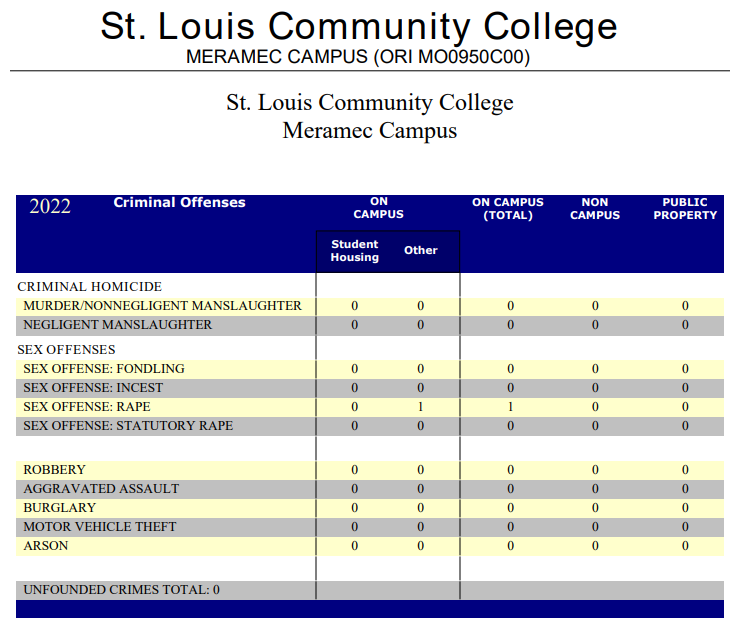Potential dangers could be seconds away; knowing how to handle it could be possibly vital to stay alive

By: Stephanie Stough
-Managing Editor-
Whether venturing outdoors or lounging around the house, there are potential dangers that could be seconds away from taking place. Being prepared for dealing with these types of emergency situations could be useful when panic and uncertainty arise. Choking while alone, witnessing a seizure, treating sprains while hiking, allergic reactions, snake bites, spider bites and minor burns are all rare, yet possible situations. If one of these situations occurs, knowing how to handle it can be helpful or possibly vital to stay alive. Cheryl Strahm, associate professor of nursing at STLCC-Meramec offers the following advice for students.
Aiding a Seizure Victim
Ten percent of the American population will experience a seizure in their lifetime according to the Epilepsy Foundation.
When someone is having a seizure, loosen any tight clothing around their neck and don’t restrict the person from moving unless they are in danger. Strahm said that if someone is witnessing someone having a seizure to time how long the seizure lasts.
“Roll the person on his or her side to prevent choking on any fluids or vomit and protect their head. Keep their airway open if necessary. Move anything that could injure the person, but don’t restrict their movement. Do not put anything in the person’s mouth… don’t leave them alone. Call 911,” Strahm said.
There are several types of seizures, according to http://WebMD.com, which is why it may be important to note the reactions of the person having the seizure such as losing consciousness, suffering from muscle stiffness or convulsions, eyelid fluttering and involuntary movements.
Relieving Poison Ivy
According to the Missouri Department of Conservation (MDC), in 1609, Capt. John Smith dubbed the poisonous plant “poison ivy.” Since then, the saying “Leaves of three, leave it be” is a general rule when it comes to identifying poison plants. Some poison ivy plants have waxy, pointy leaves and the leaflets are arranged alternately on the stem.
The best way to prevent irritation of skin from poison ivy, according to MDC, is to avoid it by not touching it or walking through it. If that is unavoidable, step on the plants with the sole of shoes and be sure to cover skin so it doesn’t touch the poisonous plants.
”Immediately after exposure, wash the areas exposed first with rubbing alcohol, then water and then soap and water. You have to do this within 10 minutes to minimize or prevent a rash. You should use gloves to handle clothes, shoes or other objects that were exposed and clean them with rubbing alcohol as well,” Strahm said. “If a rash develops anyway, you can try an over-the-counter topical solution such as calamine lotion. Oatmeal baths can also decrease itching. If it continues to spread you may need to see your doctor.”
Cooling Off Burns
From ages 5 to 74, most burn injuries occur outdoors with the next most frequent area being the kitchen according to The Bureau of Labor Statistics.
Whether it’s a burn from a camp fire, hot water, coffee, kitchen stoves or a curling iron, they are all mostly accidental according to WebMD. There are a few important steps that minor burn victims make sure they don’t follow through with such as using ice to aid the burn, applying butter or ointments to the burn or breaking blisters.
Instead, Strahm said, “Treating minor burns is really pretty easy. The best thing you could do is just apply some ice or cold water. It’s not a bad idea to cover it if you’re going to bump it or anything.”
The American Burn Association has predicted that in 2011 there will be 450,000 burn injuries that receive treatment. If the burn is bigger than the person’s palm, the burn should get medical attention.
Treating Spider Burns
They are the creatures that settle in the corners of unused, undisturbed drawers and closets. They are the two kinds of spiders capable of fatal bites in Missouri: the brown recluse and the black widow.
According to the MDC, brown recluse spiders are more likely to bite than black widows. There are less than five fatalities from spider bites every year, but a bite from a brown recluse or black widow can cause severe pain and infection.
Strahm said to capture the spider if possible so it can be identified.
“Wash the bite and then go to see the doctor if it develops pus or becomes red or swollen. Some people may find diphenhydramine pills or topical creams and gels or calamine lotion helpful to ease the itching,” Strahm said.
To avoid spider bites, stay away from tangled webs around outbuildings, storage units and old tree trunks. Spiders will not remain in an area that is constantly disturbed. Keep rooms and closets as clutter-free as possible. Shake clothing, blankets and towels and look before placing hands in a lumber pile, window well, under rocks and in little-used cabinets or drawers.
Mending a Strain
Hiking outdoors on a treacherous terrain may be difficult. It can only become more difficult after suffering from injuries such as sprains and strains. It may be beneficial to hikers to be prepared to aid those kinds of wounds. According to http://hiking.lifetips.com, preparing for hiking trips and stretching before and after hiking can prevent strains from taking place. After a sprain has occurred, Strahm explained that the victim should “support the ankle with tape or splint it with something firm and splint it.”
A splint can also be made with a pair of shoelaces and a stick. Strahm also said to call 911 as soon as possible if needed.
“If you have to walk back out, use a hiking stick and stop frequently. Get medical care as soon as you are able. Rest, ice, compression and elevation are the cornerstones of treating a sprain,” Strahm said.
After supporting the strain, apply ice but cover it with a cloth to prevent frostbite. Do this off and on for the first 72 hours of treatment and then apply heat in aid of healing.
Tending to Snake Bites
They have no legs, two eyes and a set of venomous fangs. They can be found in Missouri’s prairies, hills, valleys, swamps and marshes.
They are the pit viper snakes.
According to the MDC, 88 percent of the 51 species of snakes in Missouri are harmless. The family of snakes that are venomous in Missouri are the osage and southern copperhead, cottonmouth, western pygmy rattlesnake, massasauga rattlesnake and timber rattlesnake, all different species of the pit viper family.
These particular snakes can be identified by the “pit” between their eyes and their nostrils on each side, have well developed fangs and have elliptical pupils.
Strahm said that it’s important to note the color and the size of the snake and to “stay still with bitten area kept lower than the heart if possible.”
Strahm said to best treat a snake bite is to use a tourniquet above and below the bite without cutting off circulation, to prevent the venom from dispersing in the bloodstream.
“If emergency care is not immediately available or the victim has to walk, wait a half an hour to decrease the risk of the venom spreading and immobilize the bitten area. Do not apply anything else and get the victim to emergency care as soon as possible,” Strahm said.
Allieving Allergic Reactions
Bee stings, fire ant stings, penicillin and peanuts are known for causing dramatic reactions that can be serious and involve the whole body, according to WebMD. Factors such as minor injuries, hot or cold temperatures, exercise, stress or emotions can trigger allergic reactions. According to http://emedicinehealth.com, people are more susceptible to allergic reactions if they have asthma; lung conditions that affect breathing; nasal polyps; frequent infections of the nasal sinuses, ears or respiratory tract; sensitive skin or has had a severe allergic reaction in the past.
People who are suffering from an allergic reaction may have symptoms such as skin irritation, swelling, blistering, or hives, coughing or wheezing, swelling of the head, runny nose or stomach pain.
Strahm said that the best thing someone can do when having an allergic reaction is to identify the source and stay away from it.
“The best thing you could do is to get rid of whatever is causing it first and of course avoid it. For the most part though, if you’re having an allergic reaction, Benadryl is what most people do because it backs off the body’s response,” Strahm said.











